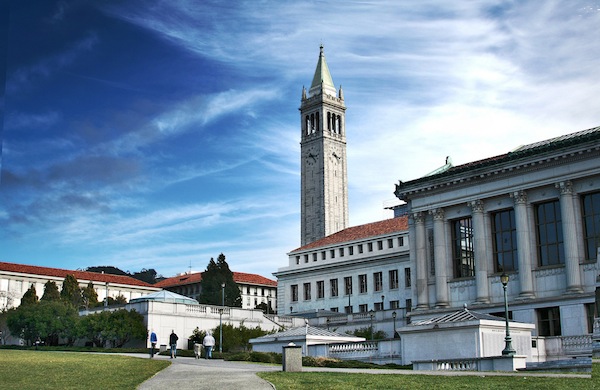


11/15/2017
The Associated Press reports that fewer foreigners are coming to the US to attend college, and the news organization apparently regards the decrease as a negative thing. Certainly many Californians would see having fewer foreign students on campus as a big plus, especially if there were also fewer out-of-staters — both groups that must pay higher tuition. Every college slot taken by a non-Californian means a state resident does not get one.
In fact, the California system of higher education is so poorly run that it has stooped to deliberate unfairness to admit more non-residents with their fat tuition checks and register fewer state residents — just the population it is supposed to serve. In 2016, the state auditor slammed the University of California for lowering standards to admit more non-residents. Young Californians must wonder why they should study hard to make good grades and high test scores when the system actively works against them. Diversity is valued, but excellence isn’t.
Years of complaints from California parents and students finally convinced the all-powerful regents to respond a tiny bit, according to a May 18, 2017 article in the Los Angeles Times: UC regents approve first limit on out-of-state and international student enrollment which specified:
Regents voted to cap nonresident undergraduate enrollment to 18% at UC Davis, UC Santa Barbara, UC Santa Cruz, UC Riverside and UC Merced. Four campuses that already exceed that level — UCLA, UC Berkeley, UC San Diego and UC Irvine — will be allowed to keep but not increase the higher percentage they enroll in 2017-18.
Nonresidents currently make up 16.5% of the system’s 210,170 undergraduates.
So the “reform” from the regents let the most popular schools — UCLA and UC Berkeley — off the hook.
Below, UC Berkeley is one of the most desirable schools. In 2016 state residents made up only 67.6 percent of the admitted class — meaning a whopping 32.4 percent of the admitted freshmen a year ago were not Californians.

Interestingly, Inside Higher Ed puts the out-of-state percentage for UC Berkeley at “more than 24 percent” — so are foreign students not counted as out of state? The numbers have gotten sketchy now that there is supposed to be a limit on non-Californians. Berkeley’s Fall Enrollment Data page has a plethora of race and other information mixed up together, probably to confuse — e.g. 24.5% white, 18.6% Chinese in 2017 plus 11.6 percent “international.”
However the bean counters slice it, Californians are getting the short end of the stick.
Plus some number of the foreigners use their presence in the country to wangle a job leading to immigration.
Anyway, here is the Los Angeles Times’ curiously upbeat position that despite the decrease of foreign students, California is still their top choice!
Enrollment of first-time foreign students dips in the U.S., but California is still No. 1, Los Angeles Times, November 13, 2017
After years of rapid growth, enrollment of first-time international students in U.S. colleges and universities dipped last year amid concerns about political uncertainty, tuition increases, visa delays and reductions in scholarship money, an annual survey found.
California remained the nation’s most popular destination for foreign students, with 157,000 coming to the state in 2016-17. They made up nearly 16% of more than 1 million international students in the United States that year, according to the survey of more than 2,000 institutions released Monday by the Institute of International Education.
Alyson L. Grunder, a deputy assistant secretary of State, said the U.S. ability to attract the world’s largest number of international students was “testament to the unmatched quality of American higher education.”
But the roughly 3% decline in new foreign students in California and nationally was the first drop the institute has recorded in the 12 years it has collected such data, and the decline appears to be deepening. The institute’s separate tally of data from about 500 colleges and universities found a 7% drop in enrollment of first-time students this fall — mostly at less-selective campuses.
Institute officials were diplomatic, and repeatedly declined to pinpoint President Trump’s hard-edged attitudes toward immigration and foreign visitors from countries he considers sponsors of terrorism.
“It really is much too soon for us yet to tell what is the definitive factor,” said Allan E. Goodman, the institute’s president. He said U.S. institutions need to redouble efforts to recruit more foreign students because they enrich campuses and collectively contributed $39 billion to the U.S. economy this past year.
“It’s a very healthy … wake-up call,” Goodman said.
Growth in foreign students is slowing
Overall, the number of international students in the United States went up by 3%, signaling a slowdown in what used to be double-digit growth. Institute officials said other countries, notably Canada, Germany and the United Kingdom, are recruiting foreign students more aggressively. Trump’s travel ban and fears of crime also appeared to be factors, they said. But only 20% of institutions surveyed in the smaller sample said international students had expressed a desire to leave the country because of the social and political climate.